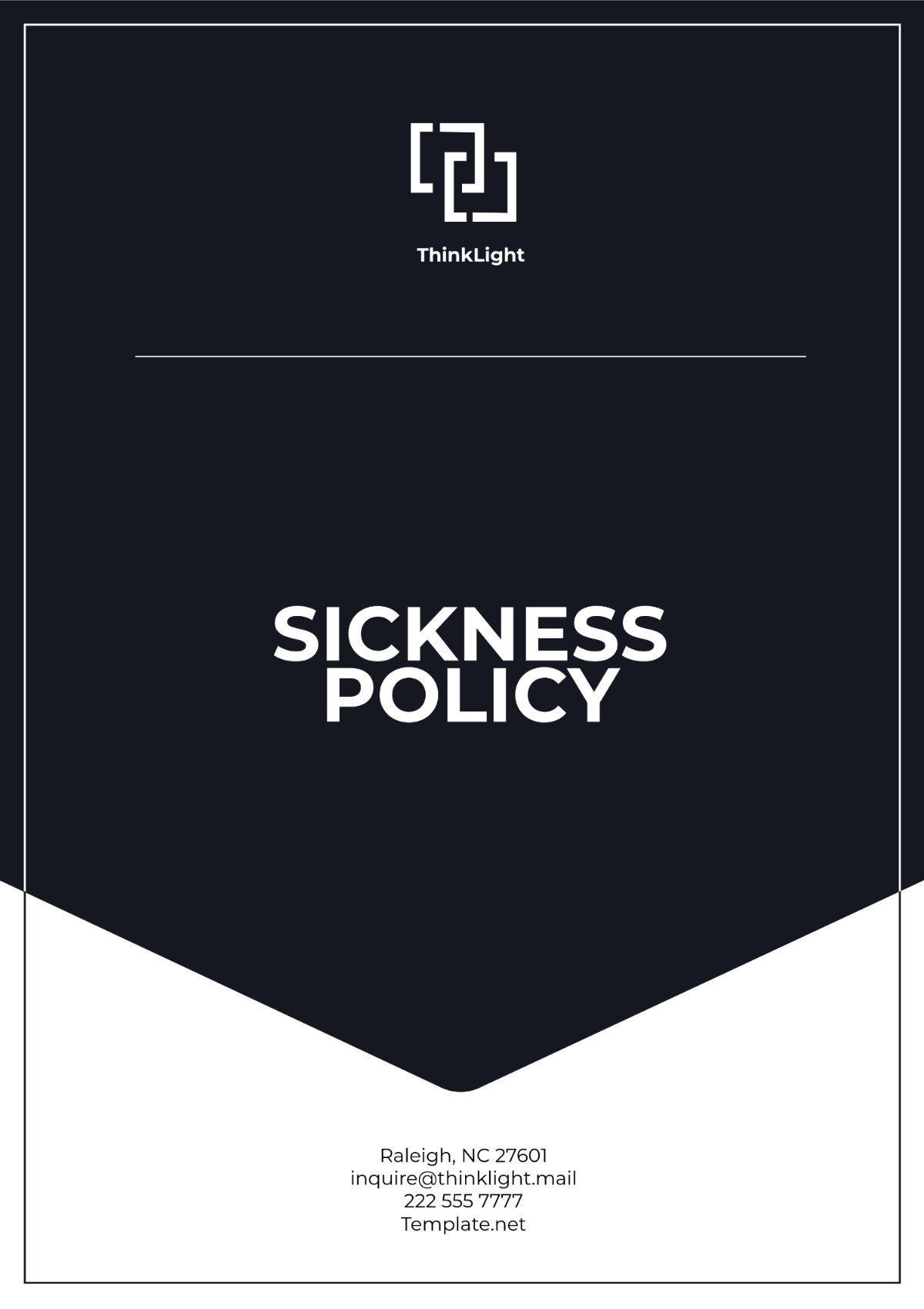Spa Overtime Policy
I. Introduction
A. Purpose
The purpose of this Overtime Policy is to establish clear guidelines for spa staff regarding the management and compensation of overtime. This policy ensures that all employees are aware of the procedures and expectations related to working beyond their regular hours.
Ensuring Fair Compensation: The policy aims to ensure that all staff members are fairly compensated for any overtime work they perform. This includes detailing the rates of pay and conditions under which overtime is compensated.
Maintaining Operational Efficiency: By establishing clear guidelines for overtime, we can maintain operational efficiency and ensure that overtime work is managed effectively. This helps prevent burnout and promotes a healthy work-life balance for our employees.
Compliance with Labor Laws: The policy ensures compliance with relevant labor laws and regulations. This includes adhering to legal requirements for overtime compensation and record-keeping.
B. Scope
This policy applies to all spa staff, including full-time, part-time, and temporary employees. It covers the procedures for requesting and approving overtime, the rates of pay, and the conditions under which overtime may be required or compensated.
C. Importance
A clear overtime policy is crucial for ensuring fair and consistent treatment of employees. It helps manage workloads, prevents misunderstandings, and ensures that staff are properly compensated for their extra efforts.
Fair Treatment of Employees: The policy ensures that all employees are treated fairly and consistently when it comes to overtime work. This promotes a positive work environment and helps retain staff.
Workload Management: A well-defined policy helps manage workloads effectively, ensuring that overtime is used judiciously and only when necessary. This prevents overworking staff and maintains productivity.
Legal Compliance: Ensuring compliance with labor laws and regulations is a key aspect of the policy. This helps avoid legal issues and ensures that the spa operates within the bounds of the law.
D. Policy Goals
The primary goal of this policy is to manage overtime work effectively and ensure that employees are fairly compensated for their efforts. By setting clear guidelines, we aim to promote a balanced and productive work environment.
Effective Management of Overtime: The policy aims to manage overtime work effectively, ensuring that it is used when necessary and in a manner that benefits both the spa and its employees.
Fair Compensation Practices: Ensuring that employees are fairly compensated for overtime work is a primary goal. This includes clear guidelines on overtime rates and conditions for compensation.
Promoting Work-Life Balance: The policy aims to promote a healthy work-life balance for employees by preventing excessive overtime and ensuring that workloads are manageable.
II. Overtime Eligibility
Not all employees may be eligible for overtime. Eligibility is based on job classification, employment status, and specific roles within the spa. The following table outlines the eligibility criteria for different categories of employees:
Job Classification | Employment Status | Overtime Eligibility |
|---|---|---|
Full-Time | Salaried | Eligible with approval |
Part-Time | Hourly | Eligible |
Temporary | Contract | Not Eligible |
A. Full-Time Employees
Full-time employees are generally salaried and may be eligible for overtime with prior approval. The criteria and conditions for full-time employees are outlined below:
Approval Requirement: Full-time employees must obtain prior approval from their supervisor before working overtime. This ensures that overtime is necessary and budgeted for.
Overtime Rates: Full-time employees are compensated at a rate of 1.5 times their regular hourly rate for approved overtime work. This rate is in accordance with labor laws and regulations.
Documentation: Employees must document all overtime hours worked and submit them for approval. This ensures accurate record-keeping and compliance with overtime policies.
B. Part-Time Employees
Part-time employees, who are typically paid hourly, are eligible for overtime under specific conditions. The following points outline the eligibility and conditions for part-time employees:
Hourly Compensation: Part-time employees are compensated for overtime at a rate of 1.5 times their regular hourly rate. This applies to hours worked beyond their scheduled shifts.
Approval Process: Part-time employees must seek approval from their supervisor before working overtime. This helps manage workloads and ensures that overtime is necessary.
Record-Keeping: Accurate record-keeping of overtime hours is required. Employees must submit their overtime hours for verification and approval to ensure proper compensation.
C. Temporary Employees
Temporary employees, often on contract, are generally not eligible for overtime. The conditions and exceptions for temporary employees are outlined below:
Contractual Agreements: Temporary employees' eligibility for overtime is determined by their contractual agreements. In most cases, overtime is not compensated unless explicitly stated in the contract.
Approval and Exceptions: Any exceptions to this policy must be approved by senior management. This includes any special projects or circumstances that require overtime work from temporary staff.
Documentation Requirements: If overtime is approved, temporary employees must document their hours and submit them for approval. This ensures transparency and compliance with the terms of their contract.
Clear eligibility criteria for overtime help manage expectations and ensure fair treatment of all employees. By defining who is eligible and under what conditions, we can maintain consistency and transparency in our overtime practices.
III. Overtime Request Process
Requesting overtime involves a structured process to ensure that it is necessary and approved by the appropriate authority. The following table outlines the steps involved in the overtime request process:
No. | Step | Description |
|---|---|---|
1 | Submit Request | Employee submits an overtime request form to supervisor |
2 | Supervisor Review | Supervisor reviews the request and evaluates the need |
3 | Management Approval | Supervisor forwards request to management for approval |
A. Submit Request
Employees must submit an overtime request form to their supervisor. This form includes details such as the reason for overtime, estimated hours, and tasks to be completed.
Request Form: The request form must be filled out completely and accurately. It should include specific details about the tasks that require overtime and the estimated hours needed.
Submission Deadline: Requests should be submitted at least 24 hours in advance. This allows supervisors enough time to review the request and make an informed decision.
Initial Review: The supervisor conducts an initial review of the request to determine if the overtime is necessary and justified. This includes evaluating the workload and available resources.
B. Supervisor Review
The supervisor reviews the overtime request and evaluates the need for additional work hours. This step ensures that overtime is only approved when necessary.
Evaluation Criteria: The supervisor evaluates the request based on criteria such as workload, project deadlines, and available staff. This helps determine if the overtime is justified.
Budget Considerations: The supervisor considers the budget implications of approving overtime. This includes ensuring that the overtime costs are within the department’s budget.
Recommendation: Based on the review, the supervisor makes a recommendation to approve or deny the request. This recommendation is then forwarded to management for final approval.
C. Management Approval
The final step involves management approval. The supervisor forwards the overtime request and recommendation to management for a final decision.
Final Decision: Management reviews the supervisor’s recommendation and makes a final decision. This ensures that all overtime requests are thoroughly evaluated before approval.
Notification: Employees are notified of the final decision. This includes informing them whether the request has been approved or denied and any conditions attached to the approval.
Documentation: Approved overtime requests are documented and filed. This ensures that there is a record of all approved overtime, which is important for tracking and compliance purposes.
The structured process for requesting overtime ensures that all requests are evaluated thoroughly and approved based on necessity and budget considerations. This helps maintain operational efficiency and ensures fair treatment of all employees.
IV. Overtime Work Limits
To prevent employee burnout and ensure a healthy work-life balance, there are limits on the amount of overtime that can be worked. The following table outlines the overtime work limits for different categories of employees:
Job Classification | Maximum Overtime Hours Per Week | Conditions |
|---|---|---|
Full-Time | 10 hours | Approval required |
Part-Time | 8 hours | Approval required |
Temporary | 5 hours | Contractual exceptions |
A. Full-Time Employees
Full-time employees are limited to a maximum of 10 overtime hours per week. This limit is established to ensure a healthy work-life balance and prevent burnout.
Maximum Hours: Full-time employees can work up to 10 overtime hours per week. This limit helps manage workloads and ensures that employees do not overwork.
Approval Requirement: All overtime hours must be approved by the supervisor. This ensures that overtime is necessary and managed effectively.
Monitoring and Enforcement: Supervisors are responsible for monitoring overtime hours and enforcing the limits. This helps prevent excessive overtime and promotes employee well-being.
B. Part-Time Employees
Part-time employees are limited to a maximum of 8 overtime hours per week. This limit helps manage workloads and ensures fair compensation for additional work hours.
Maximum Hours: Part-time employees can work up to 8 overtime hours per week. This limit helps prevent overworking and maintains a balanced workload.
Approval Requirement: All overtime hours must be approved by the supervisor. This ensures that overtime is necessary and managed effectively.
Record-Keeping: Accurate records of overtime hours must be kept and submitted for approval. This ensures compliance with the overtime work limits and proper compensation.
C. Temporary Employees
Temporary employees are generally limited to a maximum of 5 overtime hours per week unless specified in their contractual agreements. This limit helps manage workloads and ensures compliance with contractual terms.
Maximum Hours: Temporary employees can work up to 5 overtime hours per week. This limit is established to ensure fair treatment and compliance with contractual terms.
Contractual Exceptions: Any exceptions to this limit must be specified in the employee's contract. This ensures transparency and adherence to the terms of employment.
Approval and Documentation: Any approved overtime must be documented and submitted for approval. This ensures proper record-keeping and compliance with the overtime work limits.
Establishing clear overtime work limits helps prevent employee burnout and promotes a healthy work-life balance. By defining these limits, we can manage workloads effectively and ensure fair treatment of all employees.
V. Overtime Record-Keeping
Accurate record-keeping of overtime hours is essential for compliance and fair compensation. The following table outlines the key aspects of overtime record-keeping:
No. | Aspect | Description |
|---|---|---|
1 | Time Tracking | Accurate tracking of overtime hours |
2 | Documentation | Submission of overtime records for approval |
3 | Payroll Processing | Inclusion of approved overtime in payroll |
A. Time Tracking
Accurate tracking of overtime hours is essential for fair compensation and compliance with labor laws. The following points outline the time tracking process:
Time Clock System: Employees must use the time clock system to track their work hours, including overtime. This ensures accurate and reliable records of all hours worked.
Manual Logs: In cases where the time clock system is not available, employees must maintain manual logs of their work hours. These logs must be submitted to the supervisor for verification.
Supervisor Review: Supervisors are responsible for reviewing and verifying the accuracy of time records. This helps ensure that all overtime hours are accurately documented and approved.
B. Documentation
Proper documentation of overtime hours is necessary for approval and compensation. The following points outline the documentation process:
Overtime Request Forms: Employees must submit overtime request forms for approval. These forms include details such as the reason for overtime, estimated hours, and tasks to be completed.
Approval Records: Approved overtime requests must be documented and filed. This ensures that there is a record of all approved overtime, which is important for tracking and compliance purposes.
Record Submission: Employees must submit their overtime records for approval and payment. This ensures proper documentation and compliance with overtime policies.
C. Payroll Processing
Including approved overtime in payroll processing ensures that employees are fairly compensated for their additional work hours. The following points outline the payroll processing steps:
Payroll System: The payroll system must include a process for recording and compensating approved overtime hours. This ensures timely and accurate payment for extra work performed.
Verification: The payroll department is responsible for verifying the accuracy of overtime records before processing payments. This helps prevent errors and ensures compliance with overtime policies.
Payment Schedule: Approved overtime compensation is included in the next payroll cycle following the approval and submission of overtime hours. This ensures timely payment for extra work performed.
Accurate record-keeping of overtime hours is essential for compliance with labor laws and fair compensation. By maintaining accurate records and proper documentation, we can ensure transparency and fairness in our overtime practices.
VI. Employee Responsibilities
Employees have specific responsibilities regarding overtime work. The following table outlines the key responsibilities of employees related to overtime:
No. | Responsibility | Description |
|---|---|---|
1 | Request Submission | Submit overtime requests for approval |
2 | Accurate Timekeeping | Maintain accurate records of overtime hours |
3 | Policy Adherence | Follow company overtime policies and procedures |
A. Request Submission
Employees are responsible for submitting overtime requests for approval. The following points outline the request submission process:
Request Form Completion: Employees must complete the overtime request form with accurate details. This includes the reason for overtime, estimated hours, and tasks to be completed.
Timely Submission: Requests should be submitted at least 24 hours in advance. This allows supervisors enough time to review the request and make an informed decision.
Follow-Up: Employees should follow up with their supervisors to ensure that their overtime requests are reviewed and approved. This helps ensure timely approval and proper documentation.
B. Accurate Timekeeping
Employees must maintain accurate records of their overtime hours. The following points outline the timekeeping responsibilities of employees:
Time Clock Use: Employees must use the time clock system to track their work hours, including overtime. This ensures accurate and reliable records of all hours worked.
Manual Logs: In cases where the time clock system is not available, employees must maintain manual logs of their work hours. These logs must be submitted to the supervisor for verification.
Record Submission: Employees must submit their overtime records for approval and payment. This ensures proper documentation and compliance with overtime policies.
C. Policy Adherence
Employees must follow company overtime policies and procedures. The following points outline the policy adherence responsibilities of employees:
Understanding Policies: Employees should familiarize themselves with the company’s overtime policies and procedures. This helps ensure compliance and proper adherence to the rules.
Compliance: Employees must comply with all company policies and procedures related to overtime. This includes obtaining approval before working overtime and accurately recording overtime hours.
Reporting Issues: Employees should report any issues or concerns related to overtime to their supervisors. This helps address any problems promptly and ensures fair treatment for all employees.
By understanding and adhering to their responsibilities, employees can ensure compliance with the company’s overtime policies and contribute to a fair and efficient work environment.
VII. Review and Update
A. Periodic Review
To ensure the effectiveness of the overtime policy, periodic reviews are necessary. The following points outline the periodic review process:
Review Frequency: The overtime policy will be reviewed annually. This ensures that the policy remains relevant and effective in managing overtime work.
Review Committee: A review committee will be established to evaluate the policy. This committee will include representatives from management, HR, and employee representatives.
Feedback Collection: Feedback from employees and supervisors will be collected during the review process. This helps identify any issues or areas for improvement in the policy.
B. Update Process
The update process ensures that any necessary changes to the overtime policy are made in a timely manner. The following points outline the update process:
Proposal Submission: Proposed changes to the policy will be submitted to the review committee. This ensures that all suggestions are considered and evaluated.
Committee Review: The review committee will evaluate the proposed changes. This includes assessing the impact of the changes and determining if they are necessary and beneficial.
Approval and Implementation: Approved changes will be implemented and communicated to all employees. This ensures that everyone is aware of the updated policy and any new procedures.
C. Communication
Effective communication is essential for ensuring that all employees are aware of the overtime policy and any updates. The following points outline the communication process:
Policy Distribution: The updated overtime policy will be distributed to all employees. This includes providing copies of the policy and posting it in common areas.
Training Sessions: Training sessions will be conducted to ensure that all employees understand the updated policy. This includes explaining any new procedures and answering any questions.
Ongoing Communication: Ongoing communication efforts will be made to keep employees informed about the overtime policy. This includes regular updates and reminders about the policy and its requirements.
D. Monitoring and Compliance
Monitoring and ensuring compliance with the overtime policy is essential for its effectiveness. The following points outline the monitoring and compliance process:
Regular Audits: Regular audits will be conducted to ensure compliance with the overtime policy. This includes reviewing overtime records and ensuring that all procedures are followed.
Compliance Reporting: Employees and supervisors will be required to report any non-compliance issues. This helps identify and address any problems promptly.
Corrective Actions: Corrective actions will be taken in cases of non-compliance. This includes addressing any issues and ensuring that the policy is followed correctly.
Periodic reviews and updates to the overtime policy are essential for maintaining its effectiveness and relevance. By regularly reviewing and updating the policy, we can ensure that it continues to meet the needs of our employees and the organization. Effective communication and monitoring are key to ensuring compliance and promoting a fair and efficient work environment.

















































